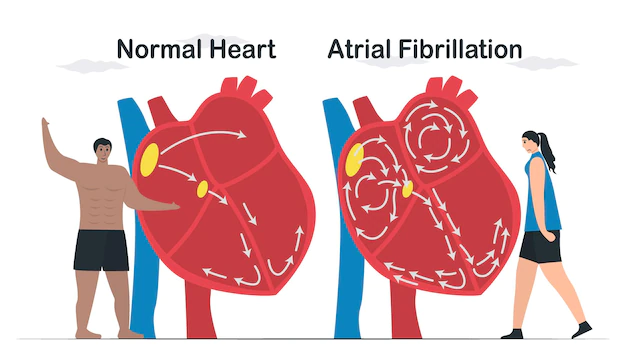Overview of Atrial Fibrillation

Atrial fibrillation (AFib) is a type of irregular heart rhythm that affects the atria, the upper chambers of the heart. Normally, the heart’s electrical signals cause the atria to contract and pump blood into the ventricles, the heart’s lower chambers. In AFib, however, the electrical signals become disorganized, causing the atria to quiver instead of contracting properly. This can lead to blood pooling in the atria, which can form clots that may travel to the brain and cause a stroke.
AFib can be caused by a variety of factors, including high blood pressure, heart disease, diabetes, sleep apnea, and excessive alcohol consumption. Symptoms of AFib may include a fluttering or racing heartbeat, dizziness, shortness of breath, fatigue, chest pain or pressure, and fainting. However, some people with AFib may not experience any symptoms at all.
AFib can be diagnosed through a variety of tests, including an electrocardiogram (ECG) and a Holter monitor, which records the heart’s electrical activity over a 24- or 48-hour period. Treatment for AFib may include medications to control the heart rate and rhythm, such as beta blockers, calcium channel blockers, or antiarrhythmic drugs. In some cases, a procedure called cardioversion may be performed to restore normal heart rhythm.
In addition to medical treatment, lifestyle changes may also be recommended to manage AFib. These may include quitting smoking, reducing alcohol consumption, managing stress, and maintaining a healthy weight. In some cases, surgery or other interventions may be necessary to treat underlying conditions that contribute to AFib.
